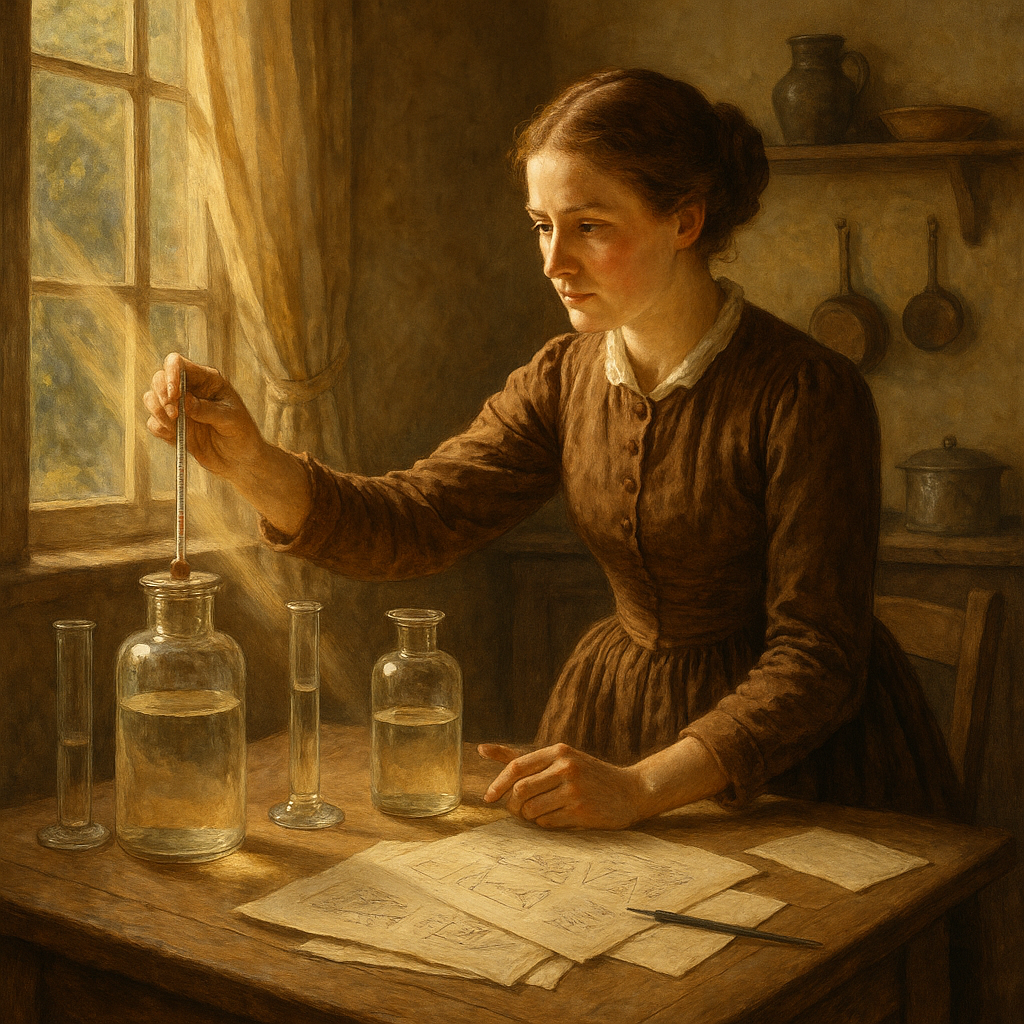Imagine this: it’s 1856. No internet. No electricity in most homes. No university degrees for women. Yet in a quiet house in upstate New York, a woman named Eunice Newton Foote was about to change climate science forever — using nothing but glass jars, thermometers, sunlight, and sheer curiosity. She had no lab, no funding, and no PhD, but she had one question: “Do different gases absorb heat differently from the sun?” With that, she accidentally discovered the greenhouse effect — the very mechanism driving global warming today.
Eunice filled two glass cylinders: one with ordinary air, and one with carbonic acid gas (what we now call CO?). She placed them in direct sunlight and observed the results. The CO? cylinder heated up much faster — reaching 125°F (52°C) — and stayed hot long after the air-filled one cooled down. In her 1856 paper, she wrote: “An atmosphere of that gas would give to our earth a high temperature.” In other words: more CO? equals a hotter planet. She had described climate change — 169 years before COP30.
But Eunice wasn’t allowed to present her work. In August 1856, at the American Association for the Advancement of Science (AAAS) conference, her paper was read aloud by Professor Joseph Henry of the Smithsonian because women were not permitted to speak at scientific meetings. There was no applause, no headlines, and no recognition. Her paper was published — and promptly buried.
Three years later, in 1859, Irish physicist John Tyndall performed similar experiments with more advanced equipment and the support of Europe’s scientific elite. He reached the same conclusion — but history credited him as the “father of climate science.” Eunice was erased.
Fast forward to 2010. A retired petroleum geologist named Ray Sorenson was flipping through old journals when he stumbled upon Eunice’s paper. Shocked, he asked, “How has no one seen this?!” He published a note in 2011, sparking new interest. Historians investigated further, and in 2019, the American Geophysical Union (AGU) created the Eunice Newton Foote Medal to honor breakthrough Earth scientists. Finally, 154 years later, she was recognized.
Eunice’s story is remarkable not just for her discovery, but for her foresight. In 1856, she predicted global warming using simple kitchen tools. She warned us, and we ignored her — not because she was wrong, but because she was a woman.
Her rediscovery began when Ray Sorenson, surrounded by a collection of pre–Civil War scientific journals, noticed her forgotten work. Buried within an 1856 entry of the Annual of Scientific Discovery, he found the name “Mrs. Eunice Foote.” As he read, he realized she had linked CO? to planetary warming three years before Tyndall. He pieced together her life — a women’s rights activist, inventor, and the first person to describe what we now call the greenhouse effect.
In January 2011, Sorenson published his findings in the American Association of Petroleum Geologists’ online journal Search and Discovery. His short article, “Eunice Foote’s Pioneering Research on CO? and Climate Warming,” reignited her legacy. Historians and scientists took notice. John Perlin of UC Santa Barbara called her work “the basis for modern climate science.” Others followed, and by 2018, the University of California hosted a symposium titled “Science Knows No Gender: In Search of Eunice Foote.”
NASA and the IPCC later acknowledged her contribution, and the AGU enshrined her name in their annual medal. Thanks to a curious geologist’s persistence, Eunice Newton Foote finally stepped out from the footnotes of history.
Her story raises larger questions: How many brilliant women were silenced? How much knowledge was lost to prejudice and gatekeeping? How many early warnings did we dismiss, not for lack of evidence, but for lack of privilege?
Today, as wildfires rage, glaciers melt, and record heatwaves strike, we live in the world Eunice predicted in her kitchen. She was right. She was first. She was silenced. But her truth survived — and the world is finally beginning to listen.
